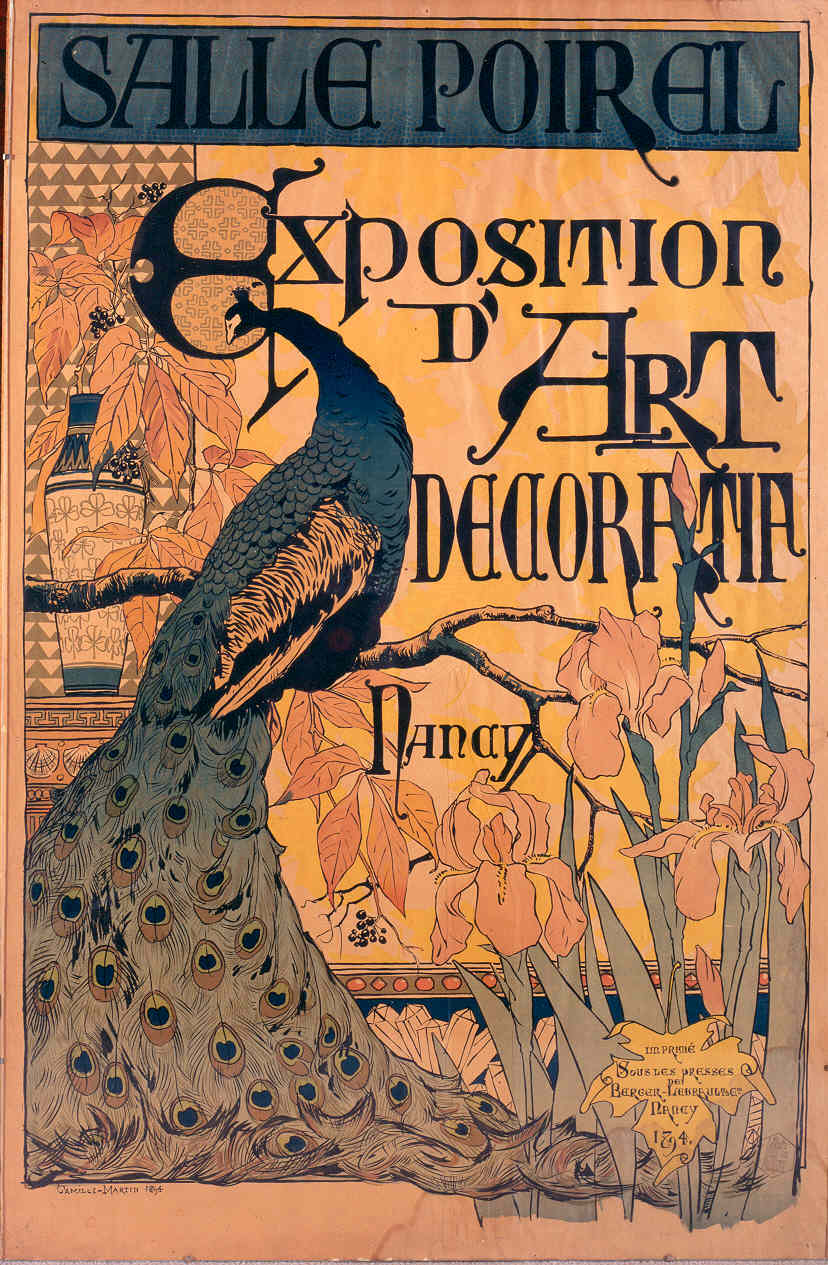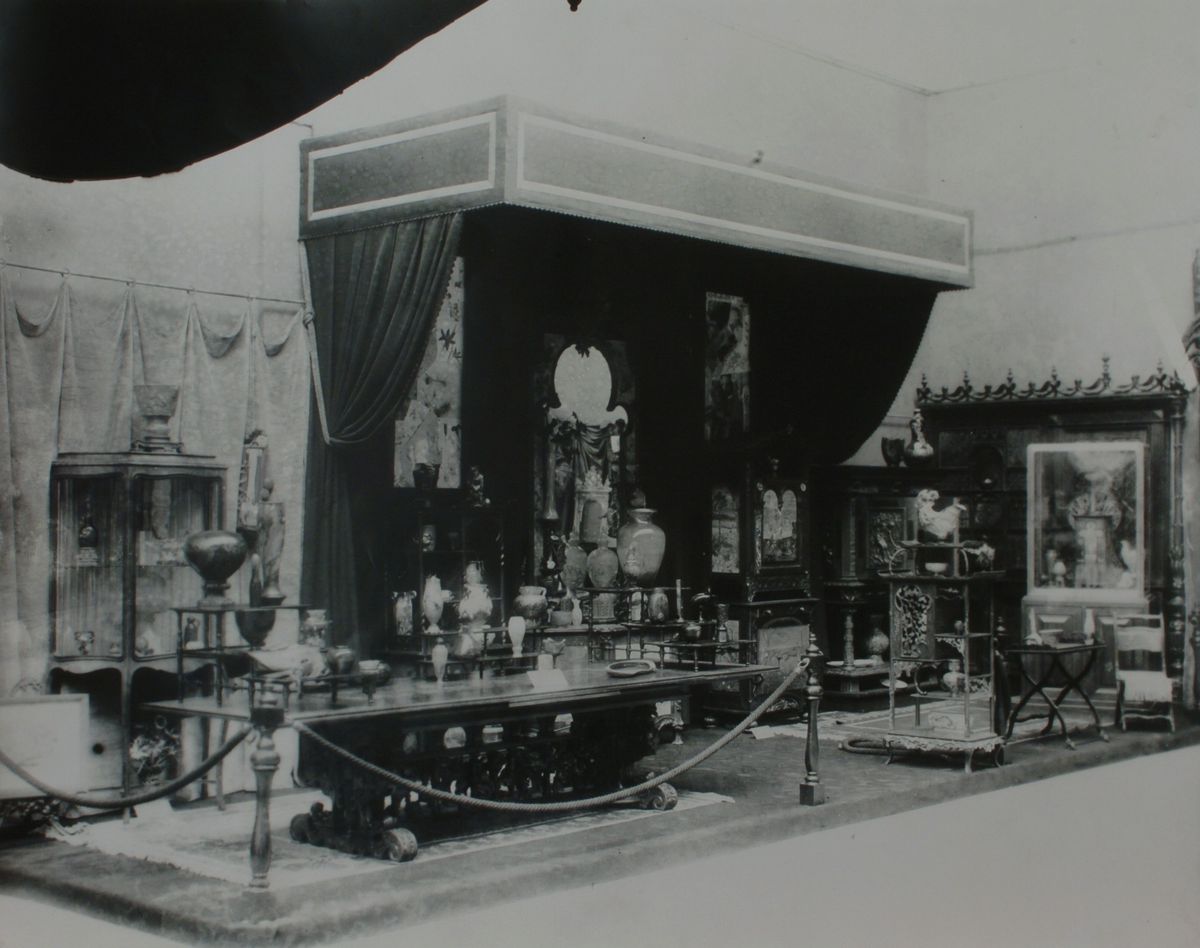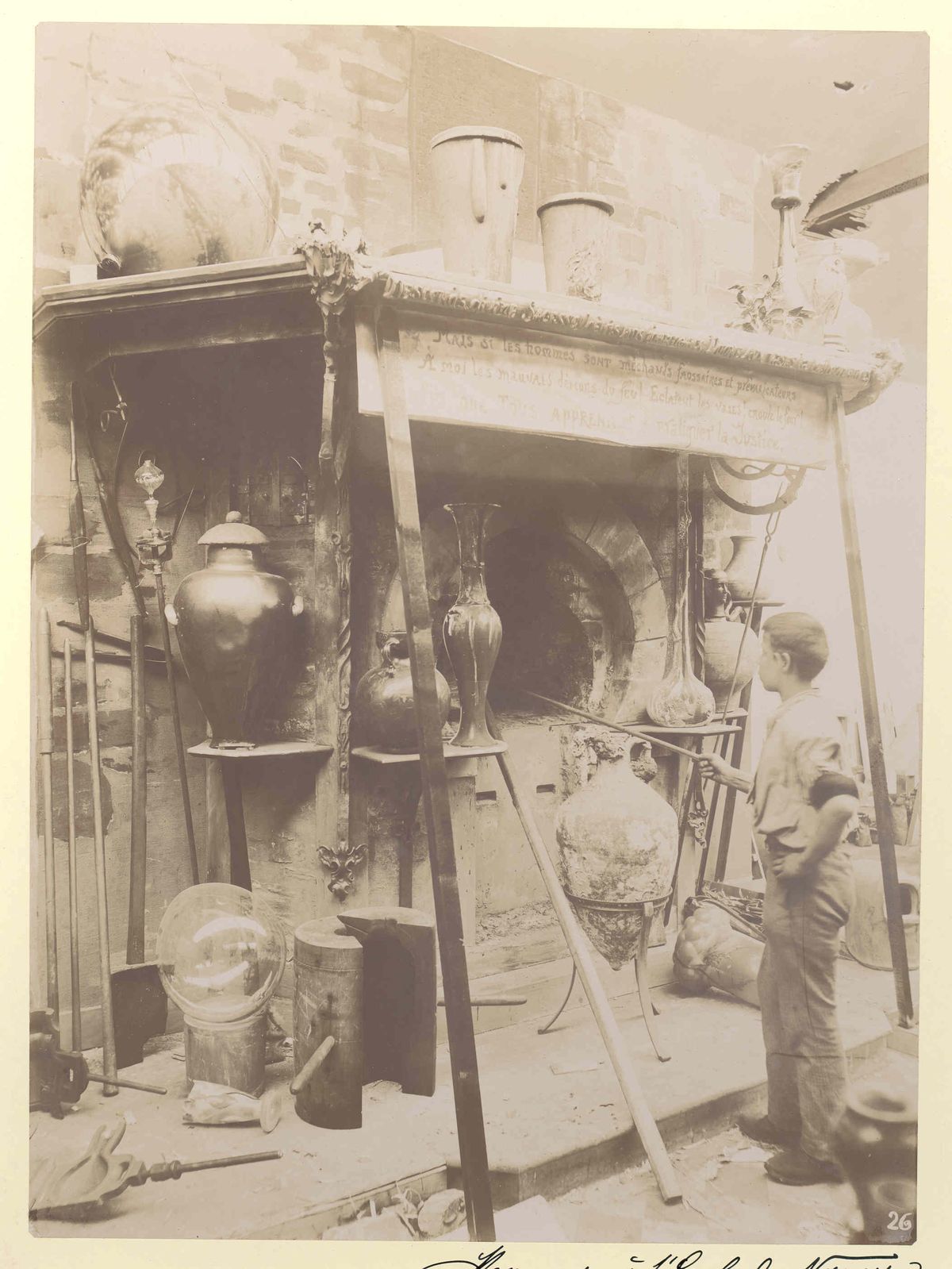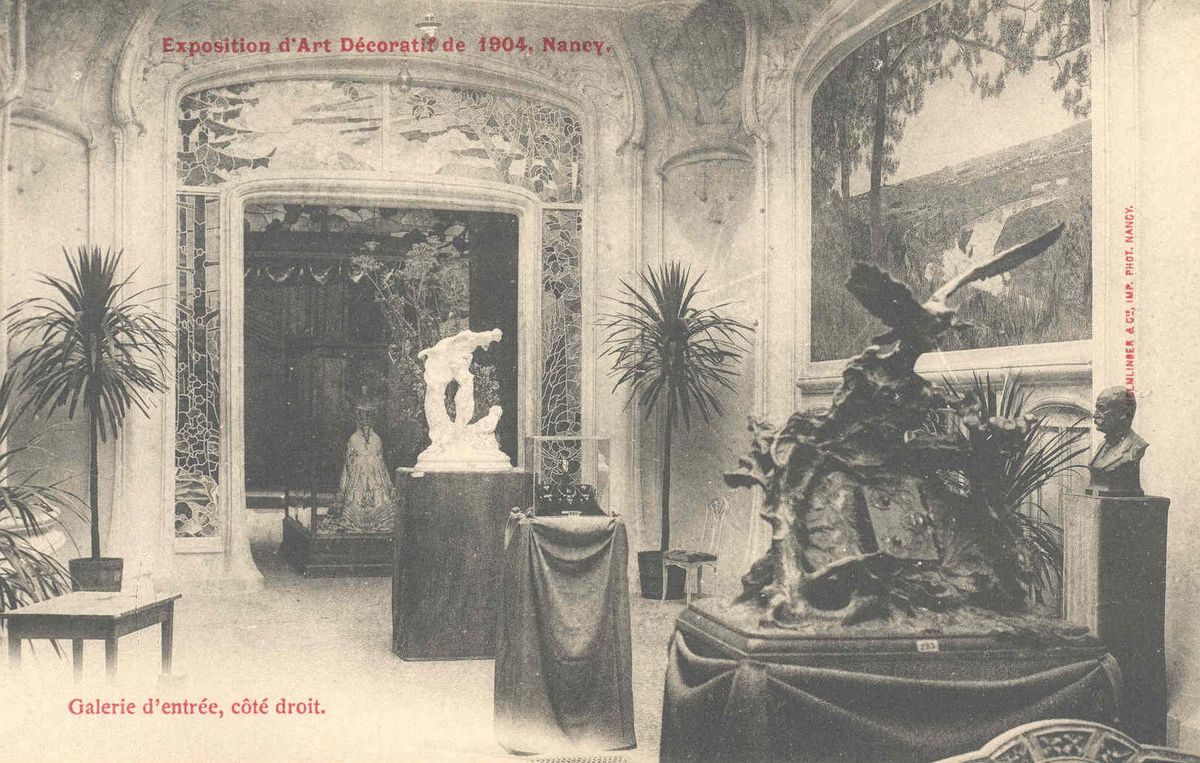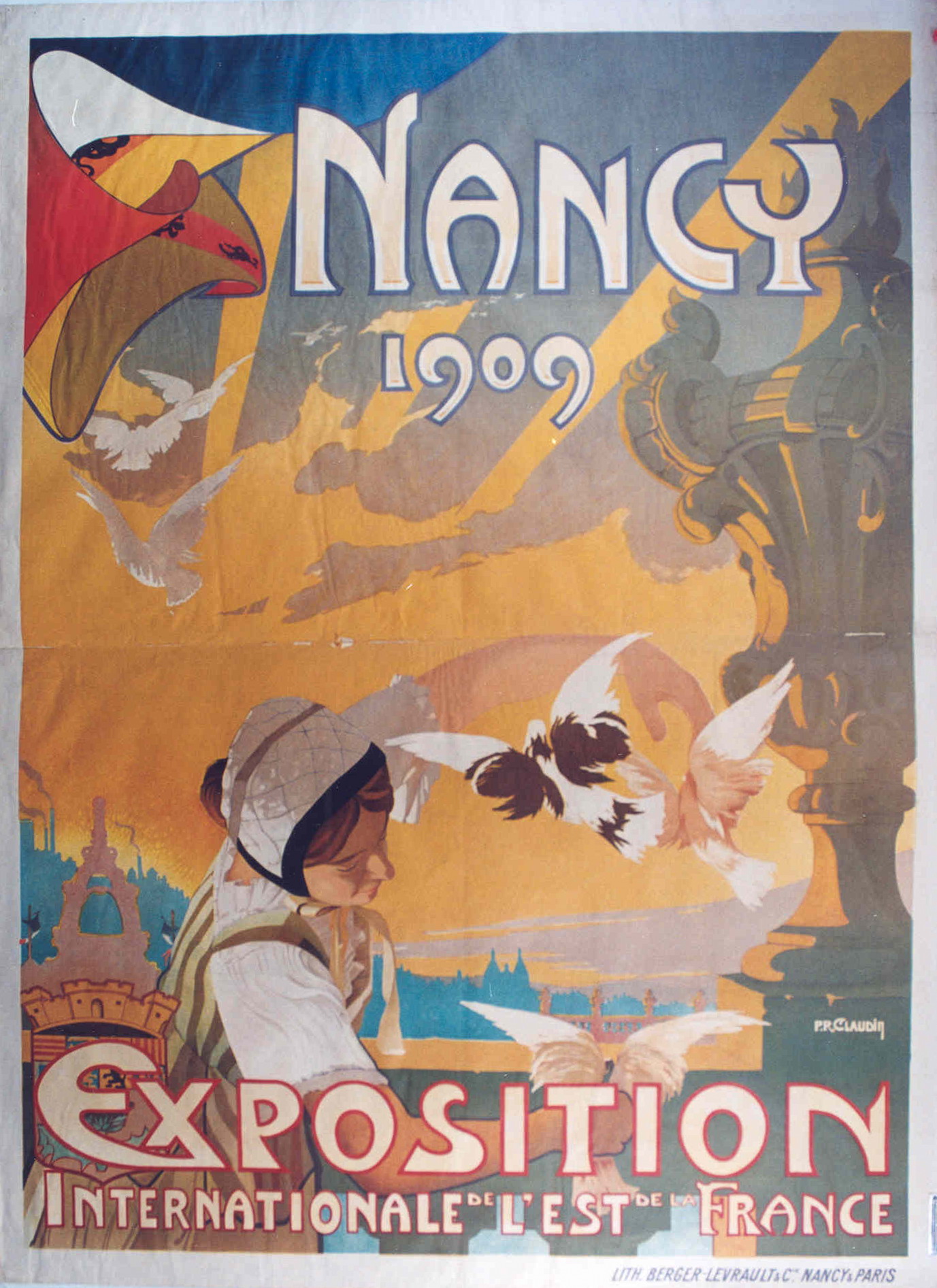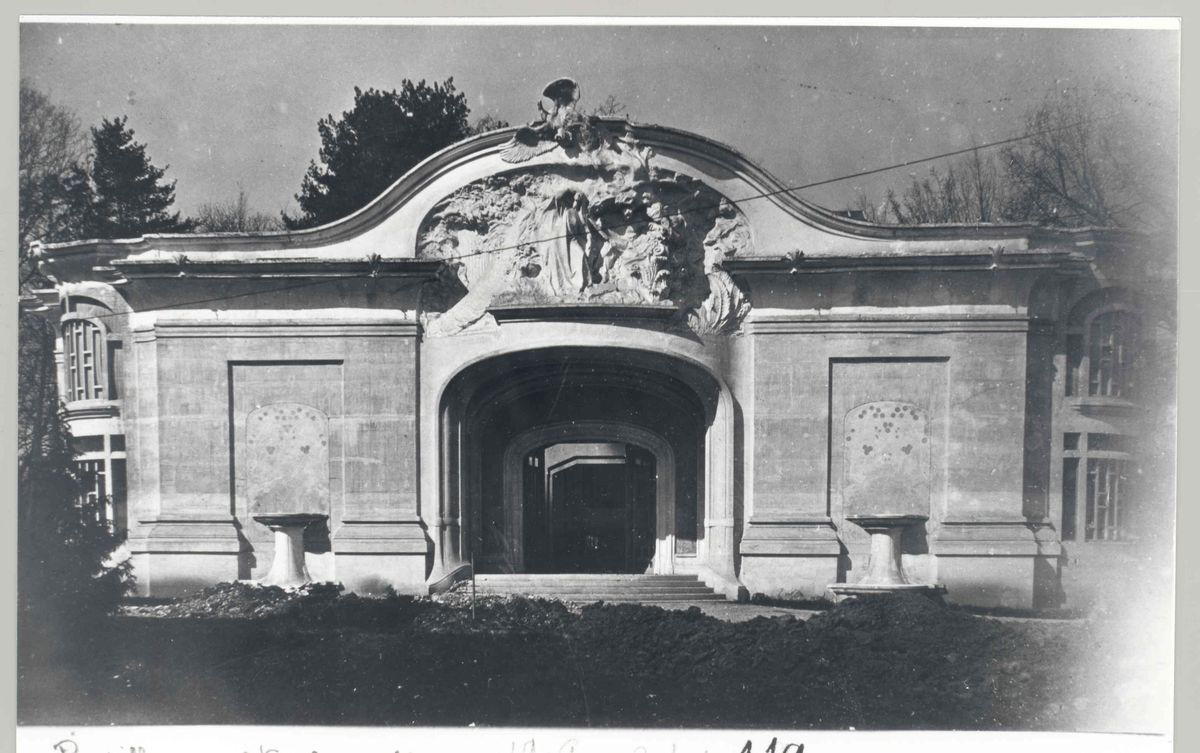The École de Nancy
As the 20th century approached and under the decisive impetus of numerous artists, architects and sponsors, Art nouveau experienced an exceptional and international development. All fields of creation and techniques were affected by this artistic movement.
In Nancy, Art nouveau is known as the École de Nancy, or Alliance provinciale des industries d'art, thanks in particular to the emblematic figure of Emile Gallé. Glassware, furniture, stained glass, ceramics, leather, ironwork, architecture, etc., were all part of this vast movement to renew the decorative arts, which still leaves its mark on the city of Nancy today.
Statutes of 1901
The École de Nancy, or Alliance Provinciale des Industries d'Art, was officially created in 1901. Its first president, Émile Gallé, drew up the articles of association, as well as the accompanying letter and foreword. These texts set out the aims of the École de Nancy, in particular to promote the decorative and industrial arts of Lorraine.
This so-called "new" art developed all over the world around 1900. Here are a few chronological landmarks for the École de Nancy:
- 1889, Paris, Universal Exhibition. Émile Gallé: Grand Prix (glassware), gold medal (ceramics), silver medal (furniture). Participation of Louis Majorelle (furniture). Émile Friant, gold medal (painting). Victor Prouvé, bronze medal (painting).
- 1893, Paris. First mention of a Lorraine school of decorative art, in connection with modern bookbinding designed by Victor Prouvé, Camille Martin and René Wiener.
- 1894, Nancy, Exhibition of decorative and industrial art at the Poirel galleries. First exhibition of the future École de Nancy. More than 70 exhibitors from Lorraine.
- 1900, Paris, Universal Exhibition. Around 50 artists from Lorraine receive awards.
- 1901, Nancy, official creation of the École de Nancy (Alliance Provinciale des Industries d'Art). Émile Gallé is its first president.
- 1903, Paris, Pavillon de Marsan. The École de Nancy exhibits its work, at the invitation of the Central Union of Decorative Arts.
- 1904, Nancy, death of Émile Gallé; opening of the École de Nancy exhibition at the Galerie Poirel.
- 1909, Nancy, International Exhibition of Eastern France. École de Nancy’s last major participation.
Art nouveau and nature
Art Nouveau in Nancy and horticulture were intimately linked. Nancy artists used to study nature to extract the most useful elements for their artistic creations. The artist Henri Bergé composed watercolor herbariums to provide models for the decorators at the Daum factory. The Gallé workshops collected botanical treatises, drawings from nature and photographs of plants in the studio. All the artists in Nancy took a keen interest in nature, which offered them an inexhaustible range of decorations.
In addition, a number of École de Nancy artists maintained friendly, artistic and intellectual relations with horticulturists. Daum and Gallé paid tribute to them through the creation of vases and objects, using some of the most recent floral creations as models.
The Société Centrale d'Horticulture de Nancy was founded in 1877 by Emile Gallé, Félix Crousse, Léon Simon and Victor Lemoine. Its members included horticulturists who were recognised nationally and internationally for the quality of their production, their innovative work and their hybrids.

